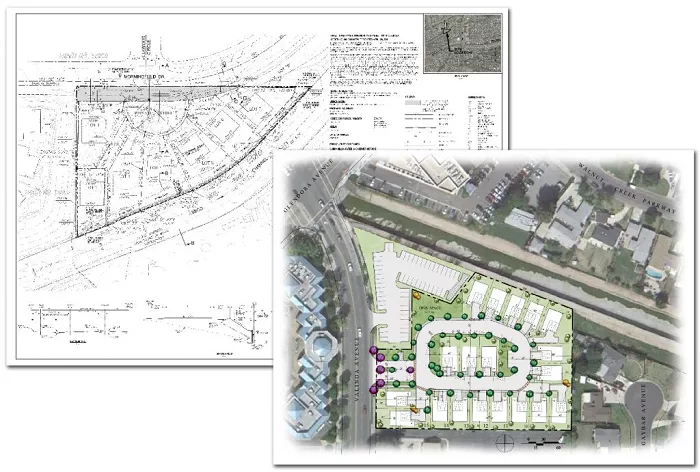The California Subdivision Map Act (SMA) is a state law that governs the subdivision of land in California. Enacted in 1974, its primary purpose is to regulate and control the design and development of subdivisions, ensuring that land is divided in a manner consistent with public health, safety, and welfare.
Purpose and Objectives of the Subdivision Map Act
The SMA serves several key objectives:
- Standardization: It establishes uniform procedures for subdividing land across California, providing consistency in land development practices.
- Local Control: While it sets statewide standards, the SMA grants local governments the authority to regulate and control the design and improvement of subdivisions within their jurisdictions.
- Public Welfare: The act ensures that subdivisions are designed to promote public health, safety, and general welfare, addressing concerns such as adequate infrastructure, environmental protection, and proper land use.
Key Provisions of the Subdivision Map Act
The SMA encompasses several important provisions:
Definition of a Subdivision
A subdivision is defined as the division of any improved or unimproved land for the purpose of sale, lease, or financing. This includes the conversion of a structure to condominiums. The act applies to both residential and commercial developments. citeturn0search8
Types of Maps Required
Depending on the nature and size of the subdivision, different types of maps are required:
- Tentative Map: A preliminary map showing the design and improvement of the proposed subdivision. It is subject to review and approval by the local agency.
- Final Map: A detailed map reflecting any conditions imposed during the tentative map approval process. It must be recorded before the subdivision can be legally recognized.
- Parcel Map: Typically required for subdivisions resulting in fewer than five parcels, involving less procedure. A tentative map may be required, along with a final parcel map. citeturn0search5
Local Government Authority
Local legislative bodies, such as city councils and county boards of supervisors, are vested with the authority to regulate and control the design and improvement of subdivisions. They can impose requirements related to:
- Infrastructure: Ensuring adequate streets, utilities, and drainage systems.
- Environmental Considerations: Protecting natural resources and mitigating environmental impacts.
- Zoning Compliance: Aligning subdivisions with local zoning ordinances and general plans.
Local agencies may also adopt ordinances that are more restrictive than the SMA, provided they do not conflict with state law.
Approval Process
The subdivision approval process generally involves several steps:
1. Application Submission: The subdivider submits a tentative map and other required documents to the local agency.
2. Review and Public Hearing: The local agency reviews the proposal, often conducting public hearings to gather input from the community.
3. Conditional Approval: The tentative map may be approved with specific conditions that must be met before final approval.
4. Final Map Submission: Once conditions are satisfied, the final map is submitted for approval and recording.
5. Map Recordation: The final map is recorded with the county recorder, legally establishing the subdivision.
This process ensures that subdivisions comply with applicable laws and regulations, addressing potential issues before development proceeds.
Recent Amendments and Legislative Changes
The SMA has been subject to amendments to address evolving land use and housing challenges. For example, California Senate Bill 684 (2023) amended the SMA to streamline approvals for housing projects with up to 10 units on urban lots under 5 acres. This law aims to facilitate the development of smaller housing projects, addressing the state’s housing shortage. citeturn0search9
Importance of the Subdivision Map Act
The SMA plays a crucial role in land development in California by:
- Ensuring Orderly Development: It provides a structured process for land division, promoting organized growth.
- Protecting Public Interests: By involving local agencies and the public in the approval process, it safeguards community interests and environmental resources.
- Providing Legal Framework: The act offers a clear legal structure for subdividers, reducing uncertainties and disputes.
Conclusion
The California Subdivision Map Act is a foundational statute governing land subdivision in the state. By establishing uniform procedures and granting local control, it ensures that subdivisions are developed in a manner that promotes public health, safety, and welfare. Understanding the SMA is essential for anyone involved in land development, urban planning, or real estate in California.

